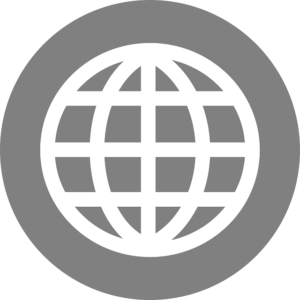You've probably been working diligently on optimizing your website for search engines, incorporating relevant keywords, creating valuable content, and creating compelling meta tags to rank high on search results.
But what about internal links? More importantly, what about broken internal links? You know, those nasty little gremlins that send your visitors and search engine crawlers to a dead-end, rather than the useful content they were expecting?
In this blog post, we'll demystify the world of broken internal links, starting with what they are and how they can impact your website's usability and SEO.
We'll then guide you through the process of finding these broken links and provide you with easy-to-follow steps to fix them. Plus, we'll give you some practical tips on maintaining a healthy internal link structure, so you can minimize the chances of broken links occurring in the future.
So, if you're ready to roll up your sleeves and get your website in tip-top shape, let's get started!
Disclosure: Although I receive affiliate compensation at no additional cost to you to support this site that compensation in no way influences my recommendations, which are strictly informed by my 10+ years of online business experience consulting for clients large and small. My aim is to always recommend tools that offer the best return for your investment (for more details, read my Affiliate Disclosure).
Understanding the Impact of Broken Internal Links
Say, you're walking through a beautiful, intricate maze, the path twisting and turning, each turn leading to another discovery. Suddenly, you hit a wall. Dead end. The path you're on leads to nowhere. Frustrating, isn't it?
Now imagine your website visitors experiencing the same thing when they encounter broken internal links on your website. Instead of being led to the valuable content they're seeking, they're greeted by the dreaded 404 error page.
It's a dead end in their journey, and it's just as annoying online as it is in a maze.
In the complex world of SEO and website management, broken internal links are the hidden pitfalls that can throw a wrench in your user experience and search engine performance.
Let's break down why they're such a big deal.
Broken Links and User Experience
First and foremost, broken internal links negatively affect your site's usability. When a visitor encounters a broken link, it disrupts their journey, causing frustration and potentially leading them to leave your site.
This increases your bounce rate, which is a signal to search engines that users aren't finding what they're looking for on your site.
Broken Links and SEO
Beyond usability, broken internal links can wreak havoc on your SEO efforts. Search engine bots, like Google's crawlers, rely on internal links to discover and index your pages.
When they encounter a broken link, it's like they've hit a roadblock. This disrupts the flow of "link equity" or "link juice" around your site, which can negatively impact your page rankings.
Moreover, a large number of broken links can make search engines think your site isn't well-maintained. In the eyes of search engines, a well-maintained site is a high-quality site, and they're more likely to recommend high-quality sites to their users.
Broken Links and Conversion Rates
But the impact doesn't stop there. Broken internal links can also hurt your conversion rates. Let's say you've got a fantastic product page, and you're driving traffic to it through various internal links.
But what if some of those links are broken? That's potential customers who aren't making it to your product page. It's like putting up a billboard with the wrong directions — it's not going to bring customers to your door.
Similarly, if a potential customer encounters a broken link while trying to make a purchase or learn more about your product, they might decide it's not worth the effort and leave.
This not only reduces your conversion rate but could also damage your reputation and customer trust.
Understanding the negative impact of broken internal links is a big step in recognizing their importance. They're not just a minor annoyance.
They're a major roadblock in your website's path to success. Fixing them should be a priority in your website management strategy.
So, let's get those links in tip-top shape and keep your website running smoothly!
How to Find Broken Internal Links
Alright, now that we've navigated through the what and why of broken internal links, it's time to roll up our sleeves and get into the how. How do you find these sneaky little broken internal links that have been causing all this trouble? Let's dive in and explore some methods.
Manual Checking
First up, the good ol' manual method. "Can I find these pesky broken links myself?" you might wonder. You sure can!
It's a bit like playing detective, hunting down the clues and uncovering the culprits. For smaller websites, you could go through each page, manually clicking on each link to check if it leads to the right place.
However, keep in mind that this process can be time-consuming and somewhat tedious. And for larger sites with hundreds or thousands of pages, this method quickly becomes impractical.
Using Website Crawling Tools

So, is there a more efficient way? You bet! Welcome to the world of website crawling tools. Tools like Link Whisper, Screaming Frog, or SEMrush can be your best buddies in the quest to find broken internal links.
These SEO tools crawl your entire site, mimicking what search engine bots do, and spot any broken internal links.
Using the Google Search Console
This free tool from Google is like your personal website health checker. Navigate to the “Indexing > Pages” section in the Google Search Console, and look for any web page listed under “Not found (404).”
It not only helps identify broken internal links but also provides a wealth of other insights about your website's performance.
How to Fix Broken Internal Links
Now, it's time to roll up your sleeves and get those links back in shape. Let's get started!
Redirecting and Replacing Links
First up on our repair list is redirecting and replacing links. If you've found that a page has been deleted or moved, causing broken links, there are a couple of ways you could fix this.
One way is to redirect the old URL to a new location or to another relevant page. This is like building a detour that reroutes traffic around a roadblock, ensuring your visitors still end up where they need to be.
Alternatively, you could replace the broken link with a valid one. This means going into your offending web page, finding the broken link, and swapping it out with a working link.
Checking Your Internal Link Structure
Another thing to consider when fixing broken internal links is your overall internal link structure. If your website's structure is too complex or disorganized, it might be contributing to the problem.
Take a step back and look at your website as a whole. Is it easy to navigate? Are pages logically linked to each other?
A simple, well-organized link structure can help prevent broken links and improve your website's usability. It's like organizing a bookshelf — it not only looks better, but it also makes it easier to find what you're looking for.
Regularly Monitoring Your Website
Finally, remember that maintaining a healthy website is an ongoing task. Regularly monitor your website for broken links and fix them as soon as they're identified (do a broken link scan at least once a month).
Also, never delete web pages without doing a redirect — this is a sure-fire way to create broken internal links.
Maintaining a Healthy Internal Link Structure



So, you've now taken care of all broken links. But the work doesn't stop there; it's now time to turn your attention to maintaining a healthy internal link structure.
Think of it as regular housekeeping for your website. Let's dive into some strategies you can use:
Use Breadcrumb Navigation
Consider adding breadcrumb navigation to your website. Breadcrumbs are a type of secondary navigation that shows a user's location on a site. It's like leaving a trail of breadcrumbs to help users find their way back.
This not only improves usability by helping users navigate your site, but it also strengthens your internal link structure and helps search engines understand your website's structure.
Use Descriptive Anchor Text
When linking internally, use descriptive anchor text — that is, the clickable text in a hyperlink. This helps users and search engines understand what the linked page is about. It's like giving a brief preview of what's to come.
But remember to keep it natural and relevant — overly optimized or keyword-stuffed anchor text can look spammy and may harm your SEO.
Link to Your Cornerstone Content
Lastly, consistently link to your cornerstone content. These are the main pages that you want to rank high in search engines.
By frequently linking to these pages, you're telling search engines that these pages are important and valuable. It's like putting up sign boards pointing towards your best stuff.
Maintaining a healthy internal link structure is a bit like tending a garden — it requires regular care and attention, but the results are well worth the effort.
By following these strategies, you can help ensure your website stays navigable, user-friendly, and SEO-friendly.
Next Steps
Finding and fixing broken links might seem like a small task, but it plays a big role in your website's overall health and success.
Think about it — by eliminating these errors, you're not just improving your website's SEO and user experience, but you're also building trust with your visitors (and trust in the online world is a big deal!).
Looking forward, it's essential to add the lessons learned today in your website management toolkit.
Regularly audit your website for broken links, keep your website structure simple and organized, and always update links whenever you change a page's URL or remove a page; it might not be the most glamorous task, but it makes a big difference.
At the end of the day, each broken link you fix is like removing a roadblock on your visitor's journey, making it easier for them to reach their destination — your valuable content.
A well-maintained website is a successful website, and you're on your way to making yours the best it can be!







